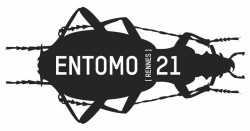|
|
|
Conférenciers invités “Biocontrol innovations: alternatives to pesticides are in our nature” In nature, pest and disease outbreaks are extremely rare. This is due to the complex interaction webs in natural ecosystems that tend to stabilize populations. In contrast, the simplified interaction webs in agricultural cropping systems are thought to encourage pest and disease outbreaks. By studying and understanding natural systems, we can identify novel solutions and strategies to control agricultural pests and diseases. Here I will present some examples from our own work, where basic ecological research has inspired successful biocontrol innovations. In times where “innovation” is often equated with “high tech”, these examples show that substantial untapped potential remains within the field of “ecological innovations”.
"Do or don’t: Fat synthesis in parasitic wasps" I am an evolutionary ecologist studying the evolution of traits in natural populations. My model of choice is the parasitic wasp Leptopilina heterotoma, a parasitoid that can switch fat synthesis on or completely off, even if it continues feeding on a sugar-rich diet. In my lab, we study fat synthesis at a microevolutionary scale, e.g., the underlying molecular mechanisms, the effects of host and wasp behavior and ecology, and at a macroevolutionary scale, e.g., comparative work with other parasitoid species.
"Secondary extinctions in ecological networks" Human impact is causing high rates of species extinctions, threatening the continued provision of many important ecological functions such as pest control and pollination. Ecological interaction networks are a brilliant tool to map species interactions in complex communities with theory predicting that initial species loss through human stressors can lead to further extinctions of other species from such networks. My research aims to understand the forces that lead to specific network structures and how these structures can buffer against cascades of secondary extinctions. https://biosciences.exeter.ac.uk/staff/profile/index.php?web_id=Dirk_Sanders
“Histoire évolutive des Chalcidiens, 150 Millions d’années de transformation morphologique, convergence et traits de vie” With ca 30,000 described species, Chalcid wasps (CW) are hyperdiverse and play paramount role in terrestrial ecosystems by regulating other insects. Thus far, the evolutionary history of CW remains poorly understood. We sampled all CW lineages and used ca 1000 UCEs to reconstruct the phylogeny of CW. I will discuss 1) the cataclysmic change our study brings to CW taxonomy, 2) the age and tempo of their radiation and 3) the role of biological innovations on disparity and diversification rates as well as on the ability of CW to disperse to new biogeographical regions.
|
| Personnes connectées : 3 | Vie privée |

|


 Prof. Dr. Bertanne Visser,
Prof. Dr. Bertanne Visser,  Dr. Dirk Sanders, Environment and Sustainability Institute, University of Exeter, UK
Dr. Dirk Sanders, Environment and Sustainability Institute, University of Exeter, UK
